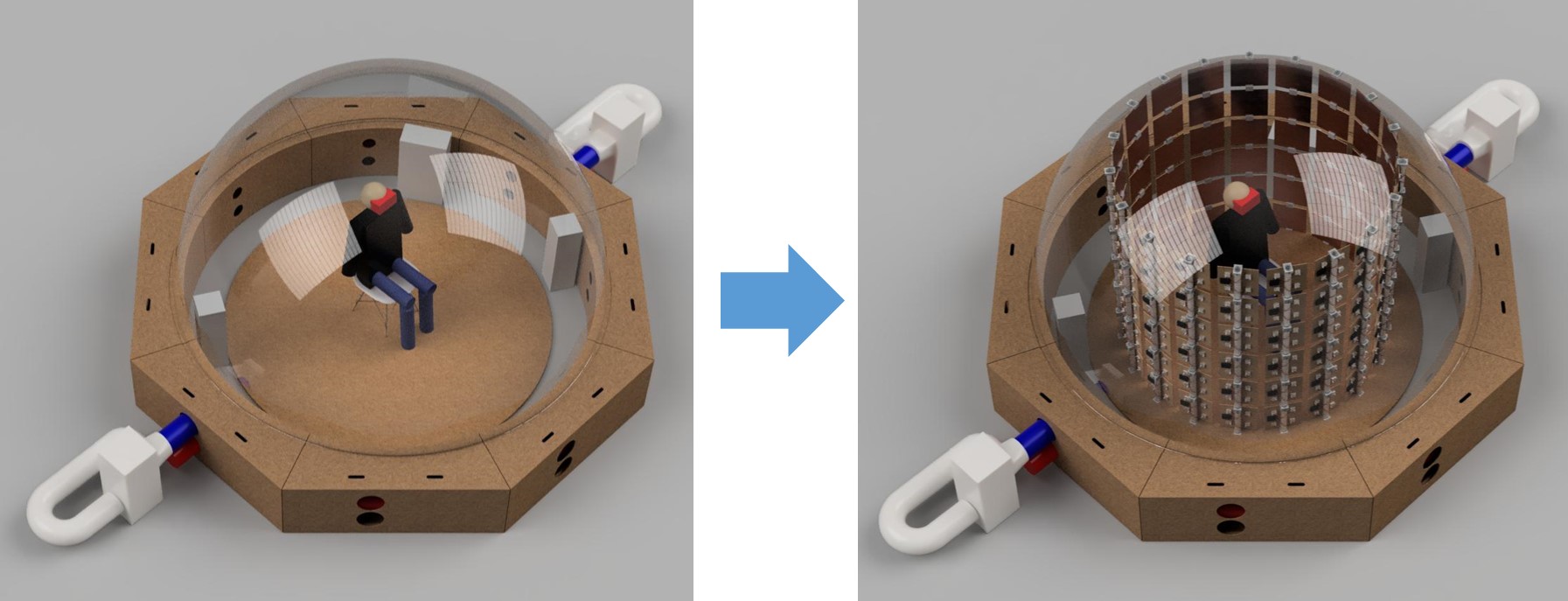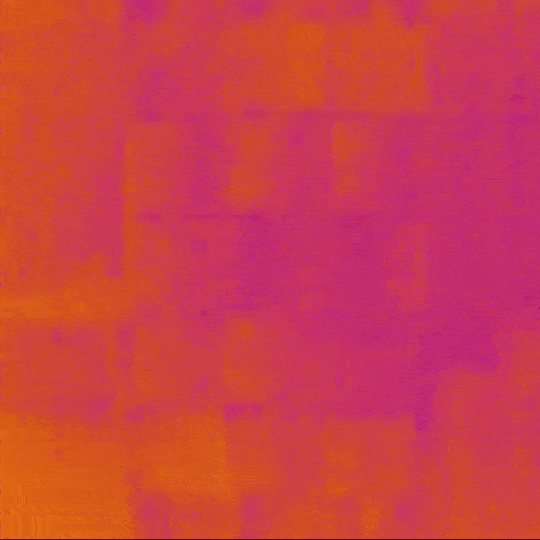Radiation Surfaces
For the perception of thermal radiation in the VR simulation environment, a cylinder with discretized radiation surfaces was added inside the climate dome, with the user positioned in the central axis of the cylinder.

The cylindrical lateral surface is discretized vertically and horizontally into 30 cm x 30 cm rectangular radiation surfaces. For each of these radiant surfaces of the cylinder, the view factors on all enclosing interior surfaces of the room model are calculated as a function of time and user position. These view factors form the basis for the calculation of a weighted equivalent temperature, which represents a projection of all surface temperatures of the room model onto a single virtual radiant surface.
Thermal Pixel
The individual square radiant surfaces are digitally controlled and radiate thermally in a wide temperature range from 10 to 60 °C of a specified target temperature. So-called thermal pixels were developed for this purpose, each of which is equipped with four thermoelectric elements (TECs) with heating and cooling functions. At the front, heat is dissipated via thermal radiation and at the rear, the waste heat from the TECs is dissipated via a water cooling system.
The TECs on the back side of the thermal pixels are supplied with a constant DC power supply whose polarity changes depending on the heating or cooling mode. A digital THErmal PIxel COntroller (ThePiCo) was developed for this purpose. Each ThePiCo has two independent H-bridges with low-pass filters to smooth the PWM signal. The controller regulates the electrical power and changes polarity if necessary so that the thermal pixels always reach the desired temperature by cooling or heating the surface.

The infrared image shows an arrangement of 5 x 3 thermal pixels, which are alternately heated horizontally and vertically to a certain temperature and then cooled down again.